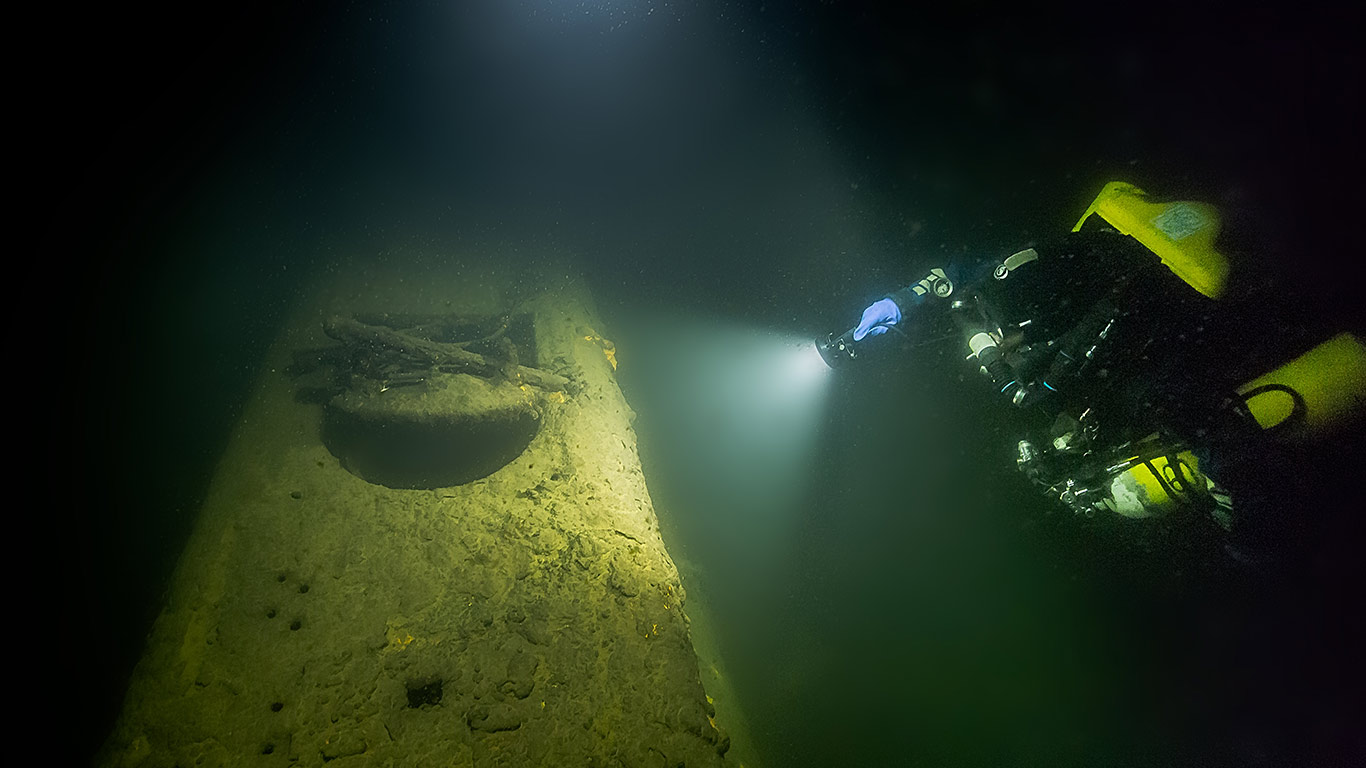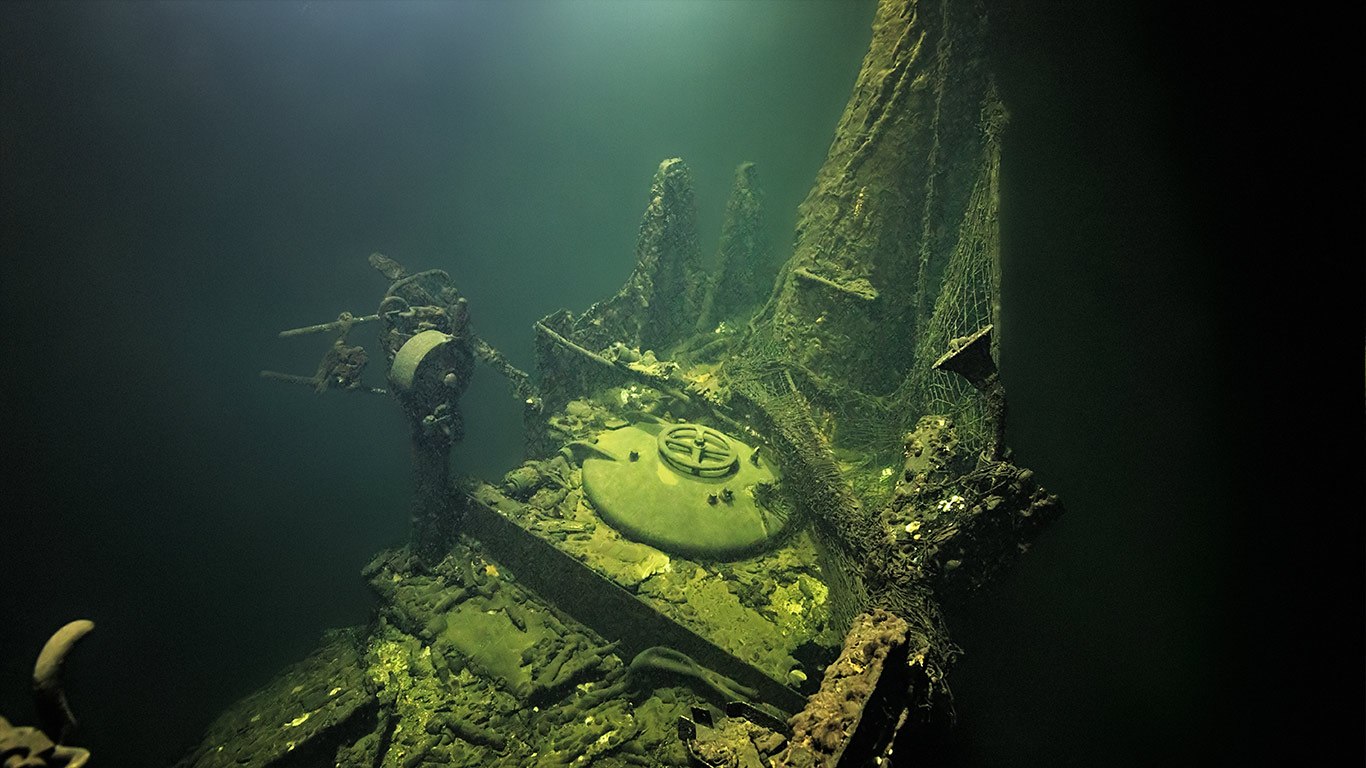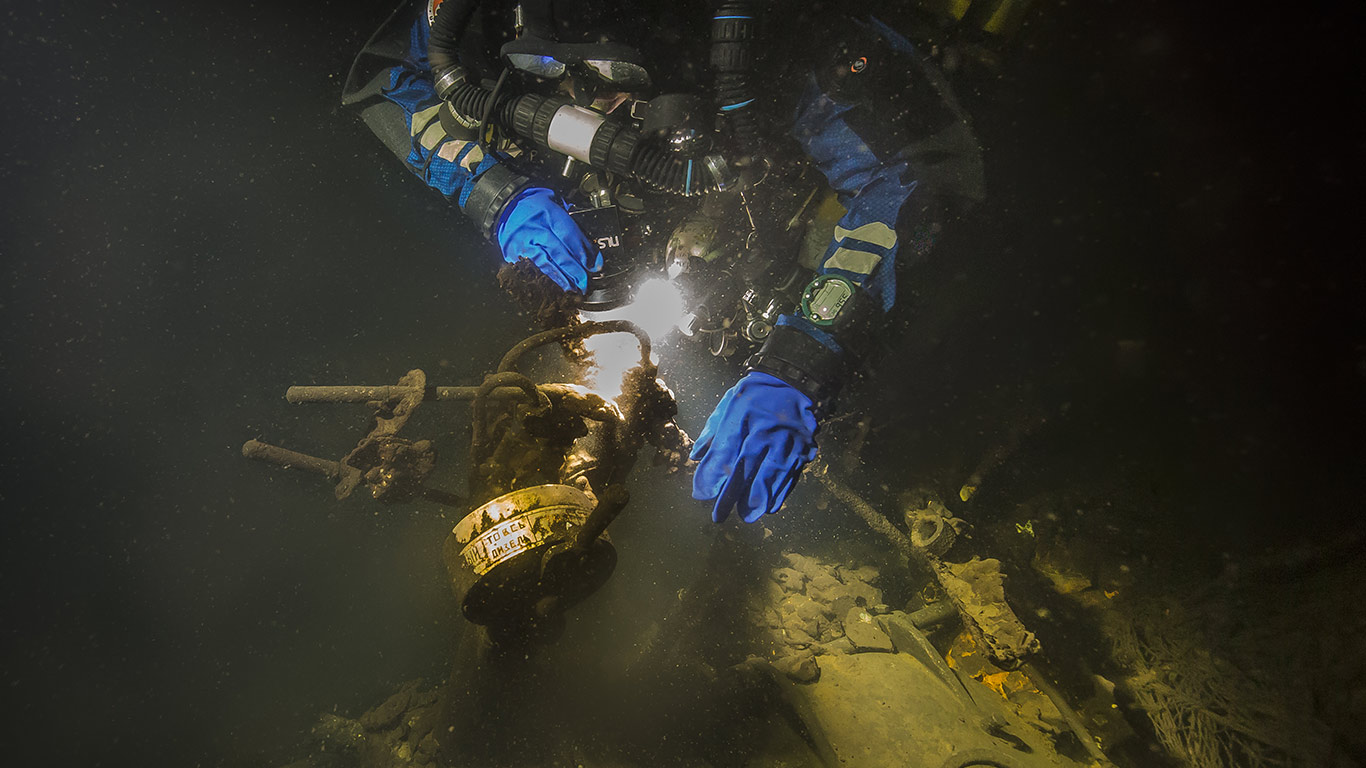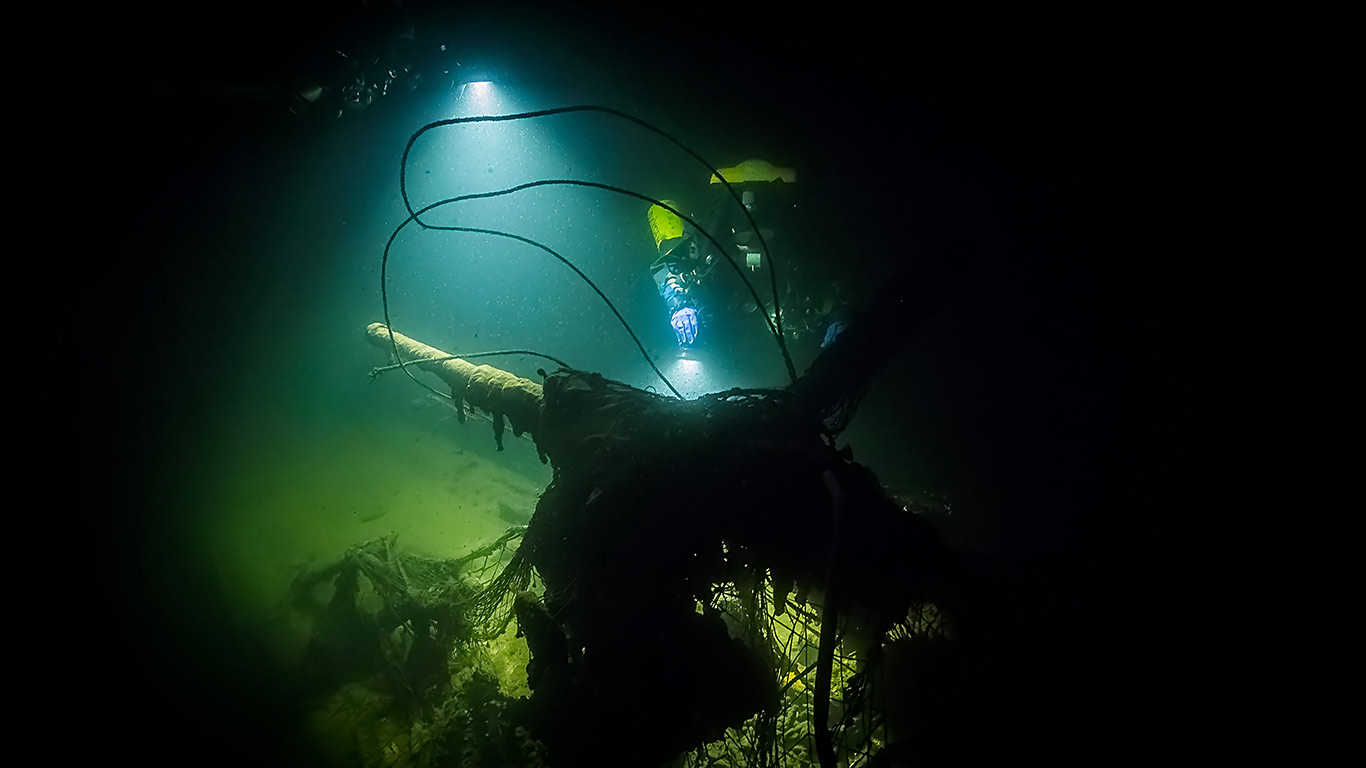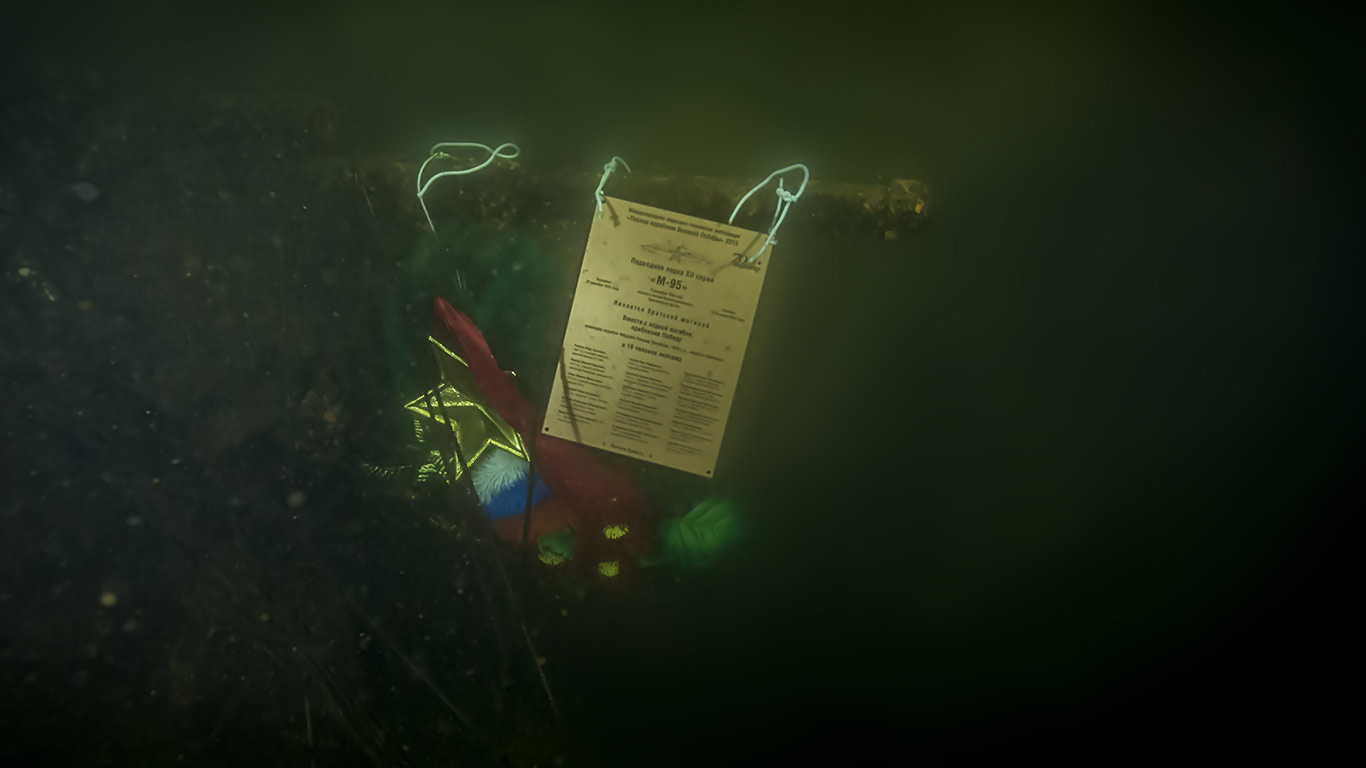М-95

Technical data
- WWII-era Soviet Malyutka-class diesel-electric XII-series submarine («malyutka» is Russian for «baby» or «little one»)
- Length: 45 meters
- Max dive depth: 90 meters
- Armament: 45mm gun, 2 x bow torpedo tubes, 2 x torpedoes
- Crew: 20 men
- Lost without a trace on 14-18 June 1942
- Found and identified by our team in 2015. She sank as a result of a mine explosion in the Finnish Rukayarvi minefield.
- Depth: 65 meters
Submarine history

The Soviet Union mass-produced the Malyutka-class submarines during WWII. M-class subs were small (just 45 meters), which made it possible for them to be manufactured deep inside the country and transported by rail to their port of departure. The submarines were designed for short-range combat patrols and had relatively modest armament: two torpedo tubes and two torpedoes (they didn’t carry extras), as well as one 45mm gun.

M-95 conducted three combat campaigns in WWII but did not achieve victory. During its final combat patrol, it launched two torpedoes at the freighter Shaulyai, which had been abandoned on Gogland Island during the evacuation of Tallinn, having mistaken it for a German ship. The submarine’s last combat mission was reconnaissance near the southern tip of Gogland Island, but it did not make radio contact and was believed to have sunk.
On the morning of 15 June 1942, Finnish and Soviet observation posts reported a powerful explosion in the area of the Rukayarvi minefield, and an oil slick was spotted. On 16 June, the Finnish air force bombed the area, and then for several more days Finnish ASW ships dropped depth charges near the location where the submarine likely sank.
Our exploration of the wreck revealed:
- There is a wide furrow in the seafloor behind the stern: the crew apparently attempted to move the submarine after it hit a mine and sank to the bottom
- The bow has damage from the mine explosion and impact with the seafloor
- There is no other visible damage, the bridge hatch is closed, and the gun is stowed with sights removed and plugs in place
- the bow handrails are bent on the starboard side, likely due to a nearby explosion from a depth charge
- The aft emergency hatch is slightly open but blocked by the bent rails
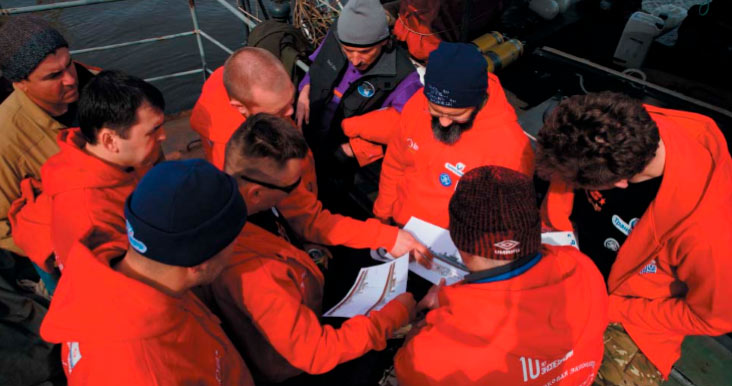
Apparently, after the submarine hit the mine, at least part of the crew in the aft compartments survived and tried to save the sinking submarine for 1-2 days. After exhausting the sub’s damage control resources, the submariners tried to abandon ship but could not fully open the aft hatch, which was blocked by the bent rails. As the bridge hatch is closed, the central post and battle bridge were likely already flooded by the time of the evacuation attempt.
The submarine was commanded by Lieutenant-Captain L.P. Fedorov.
